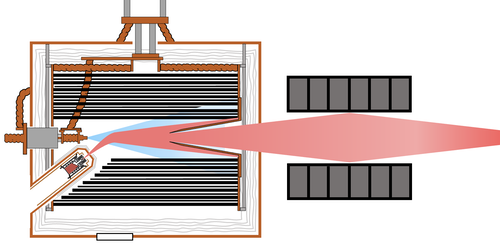Cold-Atom Beams without Laser Cooling
Cold-atom beams are used in a wide range of experiments, from those that precisely measure fundamental constants to those that involve trapping atoms and keeping atomic clocks accurate. Most of these beams are generated by laser cooling, but this method only works on certain elements. More widely applicable techniques exist, but they generally produce beams that are either very dim or relatively hot. Now Daniel Heinzen of the University of Texas at Austin and his colleagues demonstrate a new way to generate an intense cold-atom beam [1]. The team says that this method could allow researchers to create higher-flux beams than previously possible, opening the possibility of revisiting problems whose study was limited by beam brightness, such as those involving atom lasers or atomic holography.
Heinzen and colleagues demonstrated their approach using lithium atoms. First, they cooled a nonlithium “carrier” gas by flowing it out of a nozzle and expanding it, a process that dropped the temperature from 4.4 K to about 1 mK. They then seeded that gas with lithium atoms and used a magnetic lens to focus the lithium atoms into a beam. Using fluorescence spectroscopy, the team measured the temperature of the beam to be less than 10 mK and the flux to be around 2.3 × 1012 s–1, parameters comparable to those of beams made with laser-cooling methods.
The low temperature could allow for use of the beam in a meters-long atom storage ring, a possibility the team is particularly excited about. In a storage ring, the atoms could undergo further cooling as they circulate, meaning that the beam could reach temperatures where quantum behaviors dominate, a novel regime for matter-wave physics.
Correction (9 January 2023): A previous version of this article stated that the beam flux was around 2.3 × 10–12 s–1. It is actually 2.3 × 1012 s–1.
–Erin Knutson
Erin Knutson is an Associate Editor for Physical Review A.
References
- W. Huntington et al., “Intense continuous cold-atom source,” Phys. Rev. A 107, 013302 (2023).




